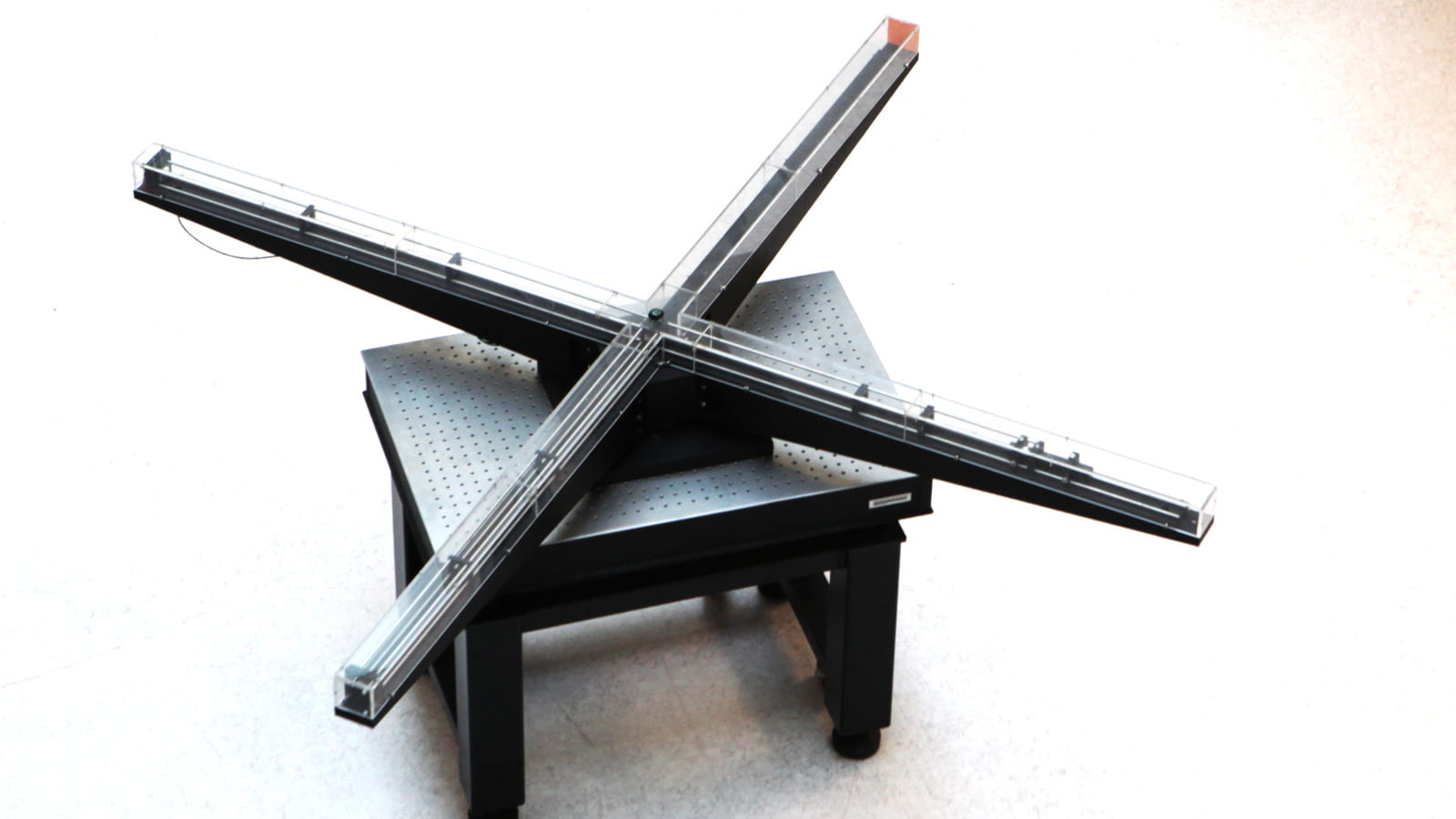
A Michelson interferometer built for science outreach. Photo credit: M. Fadly.
The Michelson interferometer is a device that uses optical interference to measure extremely small distance variations. First invented in the late 19th century, it remains in active use today; in 2017, the Nobel Prize in Physics was awarded to the LIGO experiment for using large-scale Michelson interferometers to detect gravitational waves. Recently, our team at SPMS set out to construct a Michelson interferometer for science education and outreach.
The first famous application of the Michelson interferometer was the Michelson-Morley experiment of 1887, which sought to detect the motion of the Earth relative to the “luminiferous aether”, a hypothetical medium filling all of space. Surprisingly, the experiment yielded a negative result – no relative motion was detected.
This finding remained unexplained until Albert Einstein’s 1905 formulation of relativity theory, which states that the speed of light is a universal constant, invalidating the notion of motion relative to a stationary aether. Today, the Michelson-Morley experiment is celebrated as one of the most important “negative experiments” in the history of science.

Chetan Madasu (left) and Lyu Xiaodan (right) designed and constructed a Michelson interferometer from September 2019 to January 2020. Photo credit: D. Wilkowski.
The project to construct a working Michelson interferometer was undertaken by Chetan Madasu and Lyu Xiaodan, both PhD students at the Division of Physics and Applied Physics in SPMS, overseen by myself (Associate Professor David Wilkowski). The design, construction, and testing of the apparatus took between September 2019 and January 2020, working about one day per week.
The Michelson interferometer consists of four arms oriented at right angles to each other, along which light beams can travel. The longer the arms, the better the sensitivity. For our interferometer, we chose an arm length of two metres, comparable to the arm length in the Michelson-Morley experiment of 1887.
The arms of the Michelson interferometer have to be sturdy, to protect them from vibrations that would reduce the sensitivity of the device. To avoid making the apparatus too heavy, Chetan designed the framework to have V-shaped tapers. Even with this measure, the combined weight of the arms is 50 kg.
On one arm, we installed a green laser (a much better light source than that the dim oil lamps used by Michelson and Morley!). The laser beam travels along the first arm and is split into two equal parts by a beam-splitter at the center of the apparatus. The beams are reflected by mirrors at the ends of the arms, recombining at the centre. The resulting interference pattern, viewable on a screen on the last arm, is exquisitely sensitive to variations in the paths traversed by the light.

The light pattern on the interferometer’s imaging screen forms three distinct interference fringes. Photo credit: C. Madasu.
The original Michelson-Morley experiment was designed to be rotatable by floating it in a large pool of mercury. By changing the orientation of the apparatus, Michelson and Morley hoped to vary the effective lengths traveled by the light beams, and hence measure the velocity relative to the aether.
We designed our interferometer to be similarly rotatable by mounting the arms on a slewing ring. This allowed the apparatus to be rotated smoothly, without jerking.

Associate Professor David Wilkowski.
According to our calculations, based on Galilean (rather than Einsteinian) transformations, the 30 km/s speed of the Earth in its orbit would lead to an 8% shift in the interference fringes when the device is rotated by 90 degrees. This corresponds to a variation of only 20 nanometres in the optical path length! (In fact, the Michelson-Morley interferometer of 1887 was five times more sensitive than ours despite being around the same size, since it had a more intricate design that allowed the light to reflect multiple times before recombination.) Still, an 8% shift is large enough to be easily detected by eye.
We verified that as the interferometer is rotated, the fringes do not move – as predicted by Einstein’s theory of relativity!
About the author:
David Wilkowski is an Associate Professor in the School of Physical & Mathematical Sciences at NTU. His research focuses on ultracold gases and nanophotonics.
